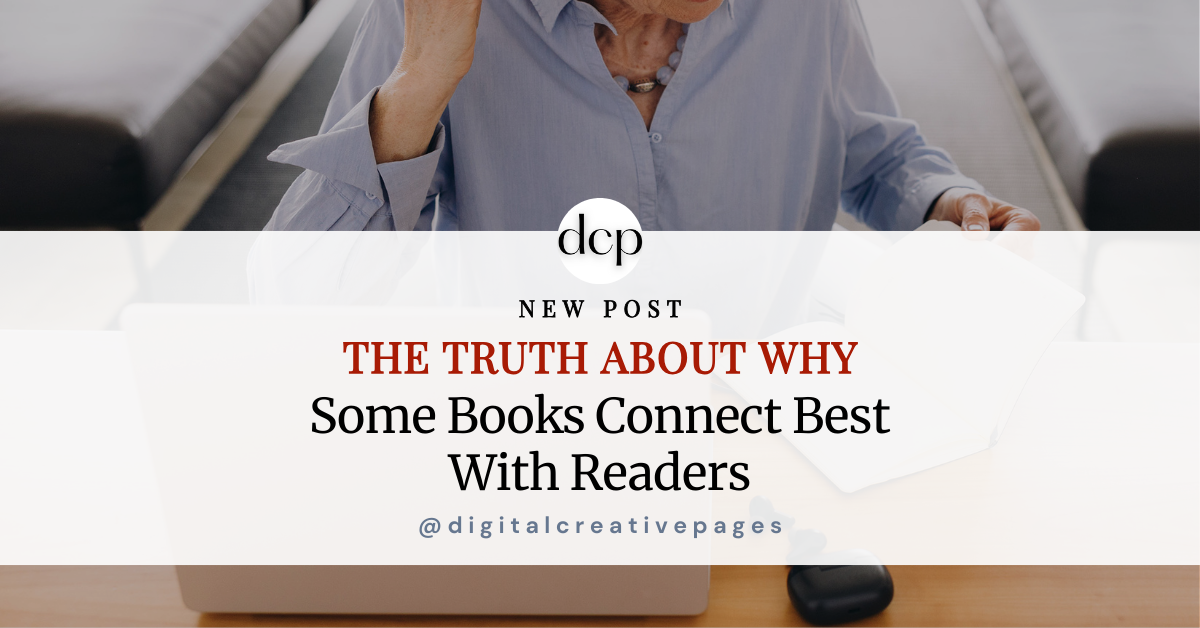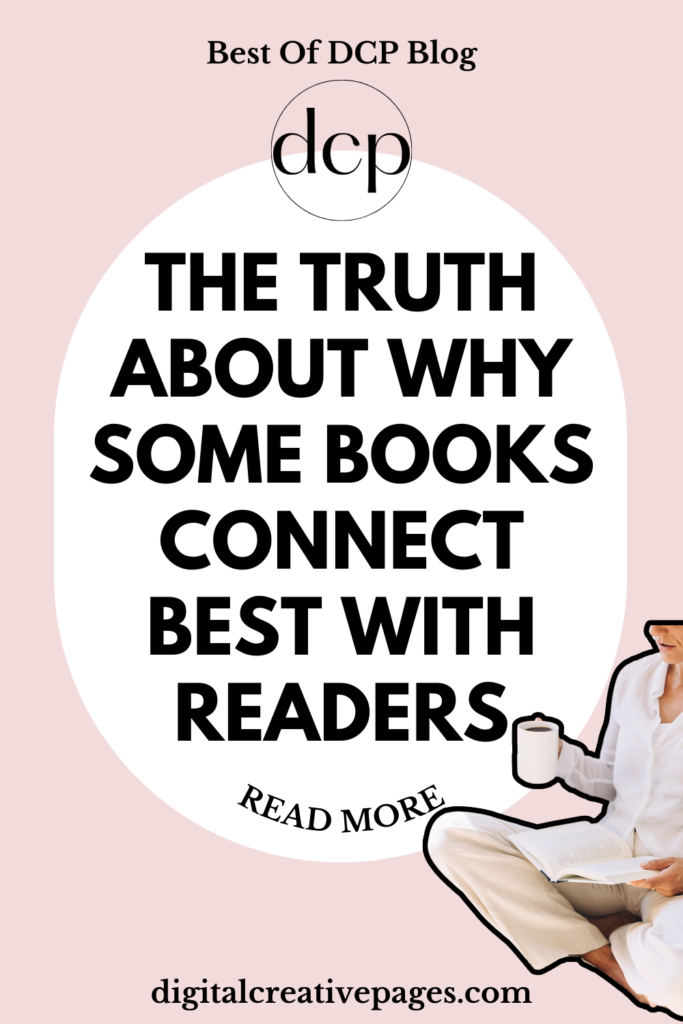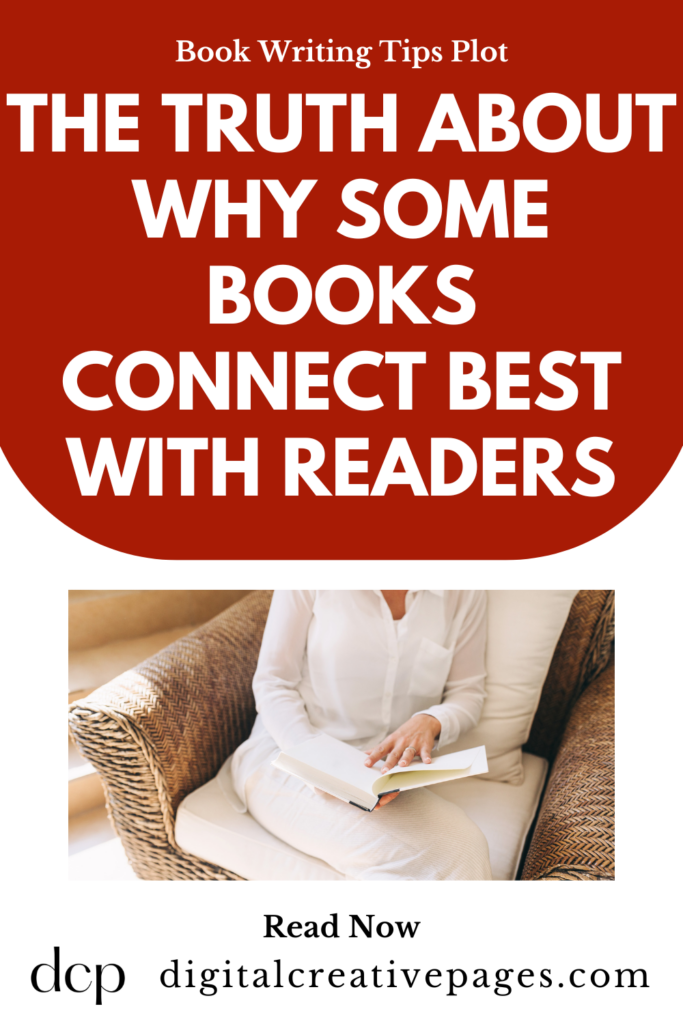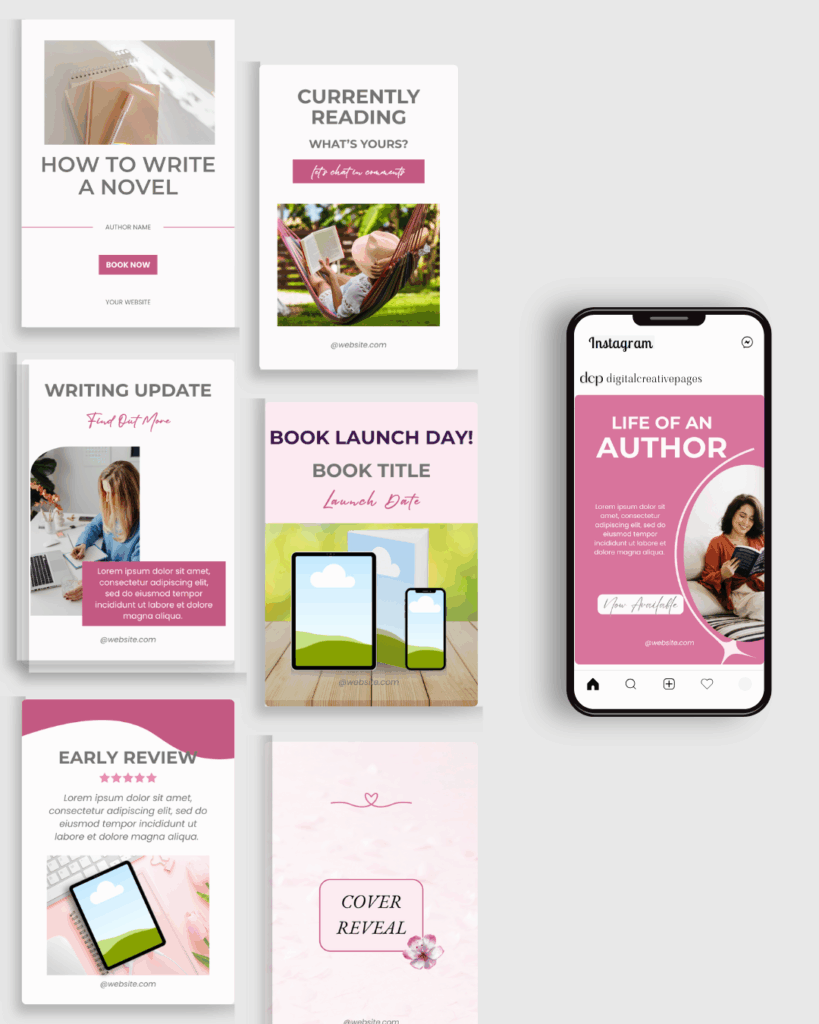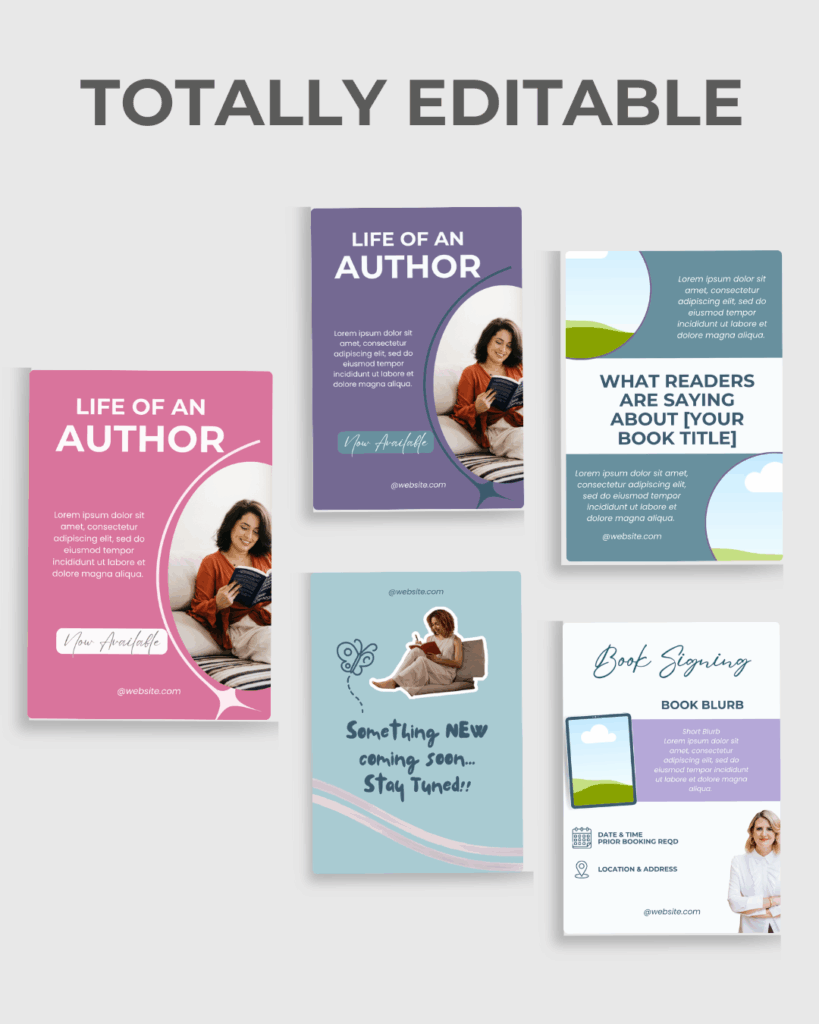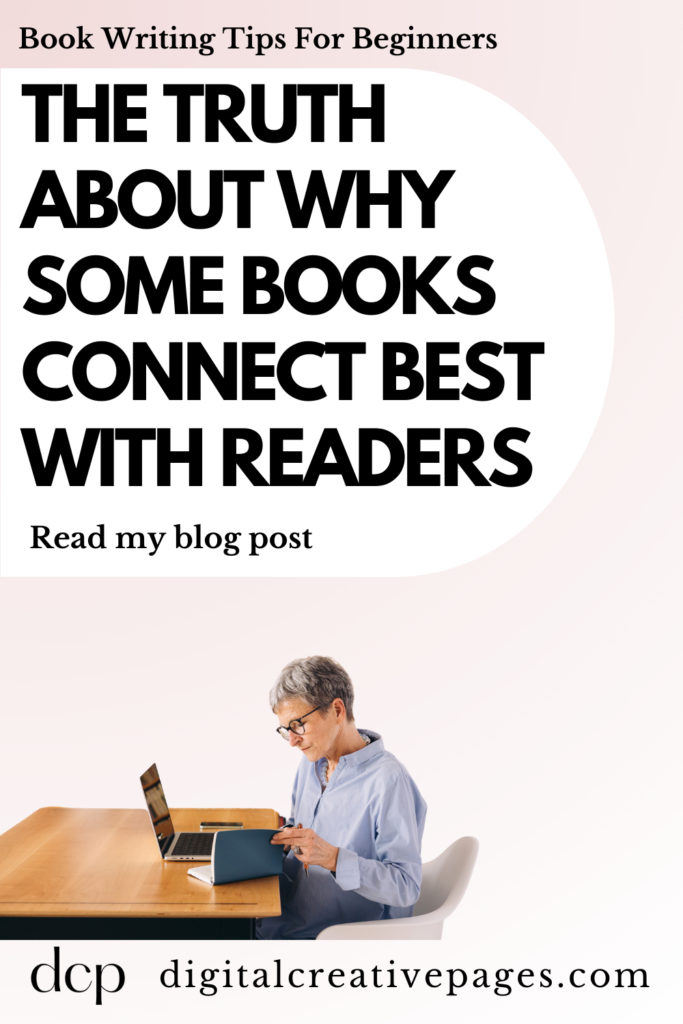Introduction
As an author, you’ve poured your heart into your book, spent countless hours shaping your characters, and built a world that feels real to you. But when it’s time to share it with us readers, something isn’t clicking. The feedback is lukewarm, sales are slow, and we readers aren’t raving about your story the way you imagined. Here’s the truth why some books connect best with readers.
Pin this for later
What Has Gone Wrong?
Let me ask you this – have you ever picked up a book that felt like it was written just for you? The characters spoke to you, the story kept you up at night, and when you turned the last page, you couldn’t stop thinking about it. A book hangover?
Now, have you ever read a book that felt…self-indulgent? Maybe it meandered too much, had endless backstory, or focused on things that didn’t seem to add to the reader’s experience
Notice The Difference?
One was written for the reader. The other was written for the author. Many writers make one crucial mistake: they write for themselves, not for their readers.
While storytelling is deeply personal, successful books find a balance between artistic expression and reader expectations. Readers want to be engaged, entertained, and emotionally invested—not just taken along for an author’s personal journey.
So, let me ask you this:
- Who are you writing for?
- Are you crafting a story that keeps readers hooked, or are you writing just to satisfy your own creative vision?
- Does your book deliver the experience your audience expects and enjoys?
As a writer, your story is personal. But if your goal is to have readers love your book, leave glowing reviews, and recommend it to others, you need to shift your perspective and strike a balance between your artistic vision and what readers actually connect with. This sounds harsh, but it is actually the truth. It’s not just about writing the book you want—it’s about writing the book your readers will love.
The publishers too want such books which will help them get instant profit. In the publishing world, post-pandemic, there’s hardly any money for publicizing books. Now they want stories that will help them sell books via word of mouth. So, whether you are self-publishing or pitching your book to agents/publishers, you need to have a book that resonates strongly with readers.
Want easy, practical content tips to grow your business? Join my weekly email list for Canva tricks, new social media updates, and simple strategies that actually work.
The Common Mistake: Writing for Yourself, Not the Reader
One of the biggest pitfalls authors face is getting too close to their own work. When you’re deep in the writing process, every scene makes sense to you. The plot feels logical. The emotions are clear. But does it translate the same way for readers?
When you’re immersed in your own world, it’s easy to think:
- This scene is important to me, so it must be important to the reader.
- I don’t need to explain this part—it makes sense in my head.
- Readers will just get what I’m trying to do.
News Flash: WE DON’T
We readers don’t have the same insight into your world that you do. We need clarity, emotional connection, and a structured story that keeps us engaged.
Signs You Might Be Writing for Yourself Instead of Your Audience
- You resist making changes because “this is how I envisioned it.”
- Your story lacks clear stakes because you’re more focused on personal themes than storytelling tension.
- Your pacing is slow because you’re adding details that you love but don’t serve the story.
- You ignore reader expectations—such as a satisfying character arc, genre conventions, or a compelling hook.
Solution
This is where beta readers and professional editing come in. A beta reader provides objective feedback, highlighting parts that confuse, bore, or frustrate the reader. A developmental editor helps refine your manuscript so that your vision aligns with what readers actually want to experience.
Save this for later
What Readers Actually Want in a Book
We readers don’t just pick up a book at random. We have expectations based on genre, storytelling style, and emotional payoff. Whether we realize it or not, we’re looking for specific elements that make a book feel satisfying.
This Is What Makes A Book Stick With Readers
- A clear and engaging story – Does the book hook them early and keep them invested? Basically, a story that doesn’t lose momentum.
- Characters they can connect with – Do they feel real and have clear motivations? Do they evoke readers’ emotions too?
- A structured plot that delivers on its promise– Does the book follow the natural arc of the genre, or does it feel scattered and all over the place? Do the subplots compel readers to keep reading?
- Pacing that keeps them engaged – Are the readers flipping pages, or skimming through slow sections?
- An emotional payoff – Does the book make them feel something—joy, heartbreak, suspense, or excitement? Do readers get book hangovers long after they finish reading?
Solution
If you’re unsure whether your book meets these criteria, a beta reader can offer reader-first insights that catch issues before you publish. A developmental editor can help refine your story so it keeps readers turning the pages.
Struggling to keep your author platform active while juggling writing deadlines?
My Author Book Engagement Template Pack includes 112 ready-to-use Canva designs for Instagram and Pinterest. Perfect for cover reveals, book launches, reader engagement, and everything in between. No more staring at blank Canva pages wondering what to post! These templates work for any genre and require no Canva Pro account. Simply download, customize with your book details and brand colors, and post.
For less than the cost of 2 lattes, get your template pack here, and never run out of engaging content ideas again
How to Write a Book That Readers Will Love (Step-by-Step Guide)
1. Know Your Ideal Reader
Before you write or revise, understand who you’re writing for.
Ask yourself:
- Who is this book for? Who is my ideal reader?
- What other books do they love and enjoy? The comp books similar to yours.
- What are they expecting from my story?
Understanding your target audience helps you craft a book that speaks directly to them.
Example
If you’re writing a mystery novel, readers expect a well-paced plot, a clever detective, and clues they can follow. If you give them a slow, character-driven story without much mystery, they’ll feel disappointed—even if the writing is beautiful.
Pro Tip
If you’re unsure, look at reader reviews of similar books in your genre. What do readers love? What do they dislike? Get to know what frustrates them. Use this research to guide your writing and refine your story. This insight into your target audience is extremely important for your own book.
2. Use Beta Readers to Test Your Story
Even the best writers can’t see their own blind spots. That’s why feedback from real readers is invaluable.
Get fresh eyes on your manuscript who are not friends or family or even other authors. Think of beta readers as your book’s test audience. So, they have to be from your general audience who are obsessed about books. Choosing a beta reader who hardly reads or reviews books is like playing with your future. You can never be sure if they do read books. Have a look at their profile, website, testimonials before using them for your book.
A good beta reader isn’t just a casual reader. They give structured feedback that helps shape your book into something more marketable.
This is how a beta reader can help you:
- They identify confusing or unclear plot points and other parts of your story.
- Spot inconsistencies in character development
- Catch pacing issues—Is the book dragging, or moving too fast?
- Understand if your book delivers an emotional impact
- They tell you where they lost interest in your story.
- In short, they give reader-first insights so you know if your book actually connects.
What to do next:
If you’re serious about improving your book before publishing, get feedback from trusted beta readers who will give you honest, constructive critiques.
Need an experienced beta reader? I offer professional beta reading services to help you get reader-first feedback before you publish.
3. Work With A Developmental Editor
Beta readers give reader reactions, but developmental editors help fix the issues before publication.
A developmental editor helps to
- Strengthen character arcs—so they feel fully developed.
- Tighten pacing—so readers don’t lose interest.
- Improve story flow—so each scene serves a purpose.
PRO TIP
Before you publish, work with an editor who understands what readers expect. A professional beta reader and editor like me can help transform your manuscript from good to unforgettable.
4. Edit With Your Reader In Mind
Writing and storytelling are creative, but editing is where you shape the story into something powerful. Editing isn’t just about fixing grammar—it’s about enhancing readability and making sure your book delivers on its promise.
Here’s what to focus on in your self-edits:
- Cut unnecessary filler—Does every scene push the story forward?
- Tighten your pacing—remove scenes that slow the momentum.
- Clarify motivations—make sure characters’ actions make sense.
- Check readability—Is your writing easy to follow?
- Sharpen dialogue—Does it sound natural and engaging?
- Remove anything that slows the pacing—Readers don’t want to slog through too much description.
- Balance detail with engagement—too much description can pull the reader out of the story.
PRO TIP
Read your manuscript out loud or have it read to you (text-to-speech works too!). If you find yourself skipping over parts, chances are readers will too.
Want professional feedback? I provide beta reading and editing services to ensure your book is clear, compelling, and ready for readers.
Final Thoughts: Don’t Just Write—Write to Be Read
Your book is your creation, but for it to succeed in the market, it needs to connect with the people who will actually read it. AKA readers like me.
Writing is personal, I agree. But do remember at every points, if you want your book to resonate, sell, and be remembered, you need to balance your vision with what will keep readers engaged.
In short, writing for your audience = A stronger book.
In Summary
- A book written for readers gets more engagement, better reviews, and stronger sales.
- Beta readers help you see your book through fresh eyes and ensure your book connects before it’s too late.
- A developmental editor shapes your book into something unforgettable. This ascertains your book delivers on its promise.
If you’re ready to bridge the gap between your vision and the reader’s experience, consider working with a beta reader or editor like ME to refine your manuscript. My beta reading and editing services help authors refine their manuscripts before publishing. Let’s make sure your book resonates with the audience it deserves.
MY TOP POSTS
My introducer post – check out why I chose Showit as my website builder here
Use my code DCP to get one 1.5 months free on Showit
Get all the resources for your social media and digital marketing without breaking the bank from my DCP Shop here
Pin this for later
